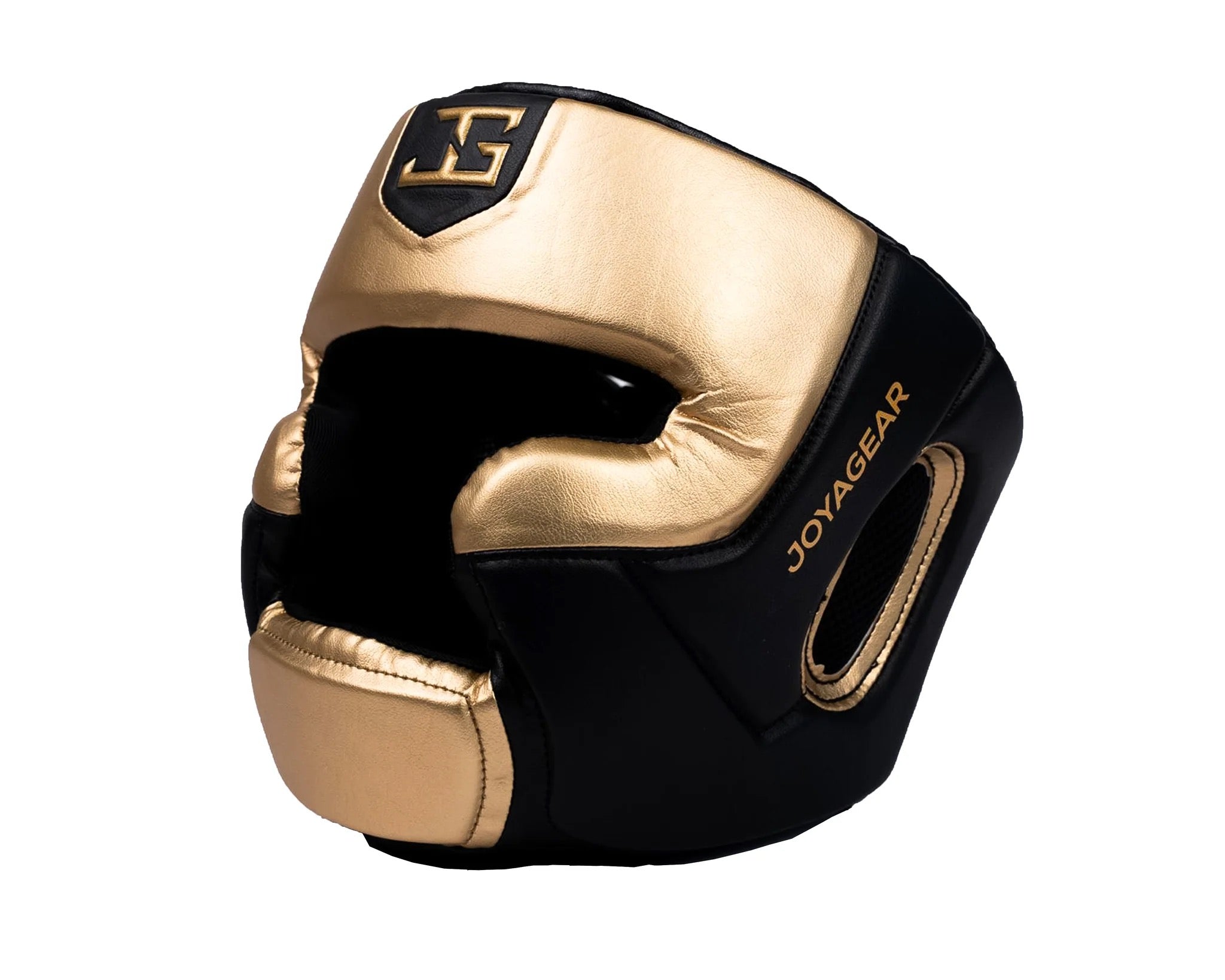Is headgear also useful during MMA training?

Mixed Martial Arts (MMA) is one of the most explosive and versatile combat sports in the world. It combines punches, kicks, clinches, takedowns, wrestling, and ground fighting. With so many different contact moments, it’s logical that safety during training is a top priority. However, headgear is sometimes underestimated in MMA, while it is actually one of the most important protective gear in this sport.
In this blog, you’ll learn everything about why headgear is essential for MMA training, when to use it, what to look for when choosing the right head protector, and how it positively influences your performance.
Check out our headgear here!
Is headgear common in MMA?
In official MMA fights, you usually see fighters standing in the cage without headgear. But that doesn’t mean you should train without it. On the contrary: during training, especially sparring, wearing headgear is a smart choice. Top teams and professional fighters worldwide use headgear during intensive sessions to reduce long-term damage.
Why? Because training is about learning, not winning. And you learn better when you stay safe, clear-headed, and focused — exactly what good headgear enables.
What does MMA headgear do?
An MMA headguard is specially designed to:
-
Absorb impact on the skull, cheekbones, and jaws
-
Reduce the risk of cuts, bruises, and swelling
-
Provide protection during clinch work and ground-and-pound
-
Protect your ears against cauliflower ear
-
Increase your mental calm and confidence during sparring
The difference with boxing headgear? MMA headgear is usually more compact so you maintain mobility and visibility during grappling and clinches.
The specific risks of MMA training without headgear
MMA carries unique risks, not only due to the power of punches and kicks but also because of:
-
Clinch work and elbows
During clinch training, heads and elbows often come very close. A slight misstep or collision can cause nasty cuts or bruises. -
Ground and pound
Being on the ground doesn’t mean you’re safe. In many positions, you’re vulnerable to short, hard strikes from above. Headgear protects the top and sides of your head from direct impact. -
Takedowns and scrambles
Wrestling or scramble situations create many unintended collisions: head-to-knee, head-to-mat, or head-to-shoulder. Headgear absorbs most of these impacts. -
Cauliflower ear
A common injury among grapplers is a deformed, swollen ear caused by repeated trauma. Good ear covers on your headgear prevent this, saving you from painful doctor visits.
Mental benefits of wearing headgear
Besides physical benefits, headgear also provides mental peace. You train with more confidence, take more risks in your techniques, and block less out of fear of pain or injury. This is especially valuable for:
-
Beginners overcoming fear of impact
-
Athletes recovering from mild head injuries
-
Fighters wanting realistic sparring without full-contact risk
The result? You develop your technique faster because you dare to practice in realistic situations.
When should you wear headgear in MMA?
While you don’t always have to wear headgear, certain training types make it wise or essential:
| Training type | Headgear recommended? | Why? |
|---|---|---|
| Sparring (light to hard) | ✅ Yes | Protects against punches and kicks |
| Ground-and-pound drills | ✅ Yes | Prevents impact from top strikes |
| Takedown training / clinch | ⚠️ Sometimes | Useful during intense wrestling |
| Technique training without impact | ❌ No | Not necessary without contact |
| Controlled grappling | ⚠️ Optional | Recommended if you have sensitive ears |
How to choose the right MMA headgear?
Not every headgear is suitable for MMA. Pay attention to:
-
Lightweight design
Heavy headgear limits head movement and slows you down. Choose a model with multi-layer foam that absorbs shocks well without feeling bulky. -
Compact profile
You don’t want to get stuck during clinches or submissions. MMA headgear is usually more compact than boxing headgear, giving you more freedom on the ground. -
Ear protection
Make sure your ears are covered with soft padding. This prevents both tears and blood buildup causing cauliflower ear. -
Open field of vision
Pick a model that doesn’t obstruct your view of the opponent. Clear vision is crucial, especially for striking and countering. -
Adjustable fit
Everyone’s head is different. A good model is adjustable with Velcro or buckles to stay firmly in place during movement.
Common mistakes when buying MMA headgear
-
Using boxing headgear for MMA — often too big, heavy, or obstructs vision
-
No ear covers — risking long-term ear damage
-
Too loose a fit — sliding headgear distracts and exposes you to more hits
-
Too closed a model without ventilation — causes overheating and loss of focus
-
Wrong size or material — if it doesn’t fit well, you won’t wear it
Joyagear Performance Headgear: Designed for MMA
At Joyagear, we offer our Performance Headgear tailored to MMA fighters’ needs:
-
Lightweight and compact design for maximum mobility
-
Adjustable fit suitable for all head types
-
Full ear protection against trauma and cauliflower ear
-
Open top and mesh panels for ventilation during intense sessions
-
Durable materials built to withstand tough training
Train harder, smarter, and safer — without compromising comfort or performance.
Headgear makes the difference in MMA training
In a sport like MMA, where every move counts and impact is inevitable, headgear isn’t a luxury but a necessity. It helps you train safely, prevent injuries, and grow confidently as a fighter. Whether you’re just starting out or training towards amateur fights — investing in good headgear is an investment in your own future.
Want to train smarter, last longer, and spar with confidence?
Choose quality. Choose protection. Choose Joyagear.
0 comments


